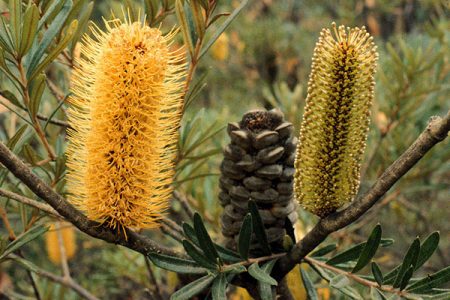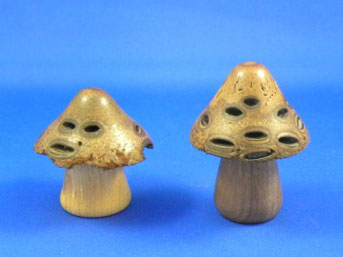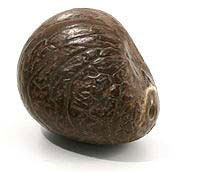As a wood turner I am always in search of unique wood to turn and in my last blog I spoke about where I get some of my wood. As an artist I’m always exploring different materials to turn to able to create something special and unique. I will touch on four of these materials.
The banksia nut or pod comes from Australia’s Bull Banksia tree. The pods are considered the fruit remains of the flower head. Once the nut has been dried it becomes very hard or woody. Banksia nuts range from 4-16 inches long. I use banksia nuts to create unique vases, small dishes, balls, furit and lidded boxes. Turning the nut is somewhat messy. The nut is very hard and does not turn or carve like wood (shaving) but rather more like scraping which becomes vey dusty. Tools need to be sharpened often and I wear a mask to save my lungs. Sanding and finishing is a much easier process.
- Banksia in flower
- banksia pod
- Banksia – Carved
Tagua nuts are the seed of the ivory palm tree found in South America. For many decades, tagua has been used as a substitute for elephant ivory and is sometimes known as vegetable ivory. The nuts are about the size of a chestnut and provide challenges turning vases and lidded boxes. The challenge is that in its inner core, the tagua has voids. Once I have the nut attached to my lathe, which can be a little tricky, I turn the outside profile. Sometimes I cut into a void and I need to reconsider what I am doing or it goes to the burn bucket. Unlike the hard, dusty banksia nut, turning tagua nuts is a pleasure. My chisels carve thin white shavings which seem to go on forever.
- Ivory Palm Tree
- Tagua Nut
- Items from Tagua
Antlers from deer and moose that have been found on the forest floor are used to make pens, vases and small dishes. Like the banksia nut, antlers are very hard and I need to sharpen my tools often. There is minimal dust but when turning, you may think you’re in an abattoir due to the odor from cutting into the antler.
- Deer Antler
- Items from Antler
I have turned acrylic to make pens which I found out quickly is not my favourite material. Basically it stinks. Turning it is somewhat ok but sanding it smells like burning plastic. Sanding acrylic you need to use 1000 – 1500 grit to have a good finish as with wood you may need 400 – 600 grit to have a decent finish.
- Acrylic Block
- Acrylic Pen











